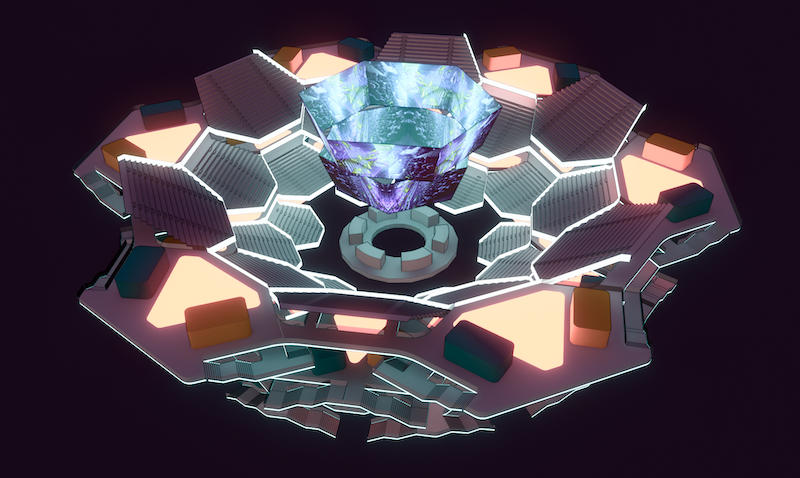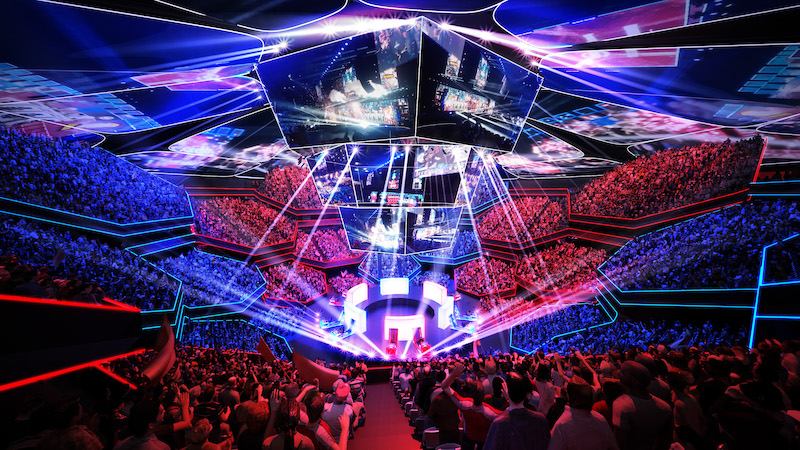Over 450 million people will view an eSports event in 2019, and while many of those people will watch online, design firm HOK, and SAP, a software company, have released a new report exploring the future of the eSports venue, one that blends online connectivity with a physical space.
“Purpose-built venues have historically had a significant impact in establishing a sport in a culture and community,” said Nuno Guerreiro, architect at HOK and co-author of the report, in a release. “Because of the length of these events and technological requirements, e-sports have a unique audience seeking more connected, hands-on experiences. Architects and designers have an opportunity to rethink every aspect of the traditional sports and entertainment environment—from a building’s location and form down to the seat.”
See Also: Gamers paradise: The rise of eSports arenas

The report touches on some key design features such as:
— A non-traditional seating bowl
— An immersive environment
— Reimagined geometries and spatial organization
— More intimacy
— A blending of technology with the built environment
— Hospitality-driven experiences
The blending of technology with the built environment is especially important, as eSports viewers tend to be younger, tech-savvy individuals who are not willing to completely forgo the digital experience eSports offers to physically attend an event. Seats that have connectivity for VR headsets and the ability for a digital avatar to sit within the physical bowl of an arena are just some features the design firm is exploring
For the full report, click here.
Related Stories
| Aug 11, 2010
Nurturing the Community
The best seat in the house at the new Seahawks Stadium in Seattle isn't on the 50-yard line. It's in the southeast corner, at the very top of the upper bowl. "From there you have a corner-to-corner view of the field and an inspiring grasp of the surrounding city," says Kelly Kerns, project leader with architect/engineer Ellerbe Becket, Kansas City, Mo.
| Aug 11, 2010
Financial Wizardry Builds a Community
At 69 square miles, Vineland is New Jersey's largest city, at least in geographic area, and it has a rich history. It was established in 1861 as a planned community (well before there were such things) by the utopian Charles Landis. It was in Vineland that Dr. Thomas Welch found a way to preserve grape juice without fermenting it, creating a wine substitute for church use (the town was dry).
| Aug 11, 2010
Integrated Project Delivery builds a brave, new BIM world
Three-dimensional information, such as that provided by building information modeling, allows all members of the Building Team to visualize the many components of a project and how they work together. BIM and other 3D tools convey the idea and intent of the designer to the entire Building Team and lay the groundwork for integrated project delivery.
| Aug 11, 2010
Bronze Award: Alumni Gymnasium Renovation, Dartmouth College Hanover, N.H.
At a time when institutions of higher learning are spending tens of millions of dollars erecting massive, cutting-edge recreation and fitness centers, Dartmouth College in Hanover, N.H., decided to take a more modest, historical approach. Instead of building an ultra-grand new facility, the university chose to breathe new life into its landmark Alumni Gymnasium by transforming the outdated 99-y...







